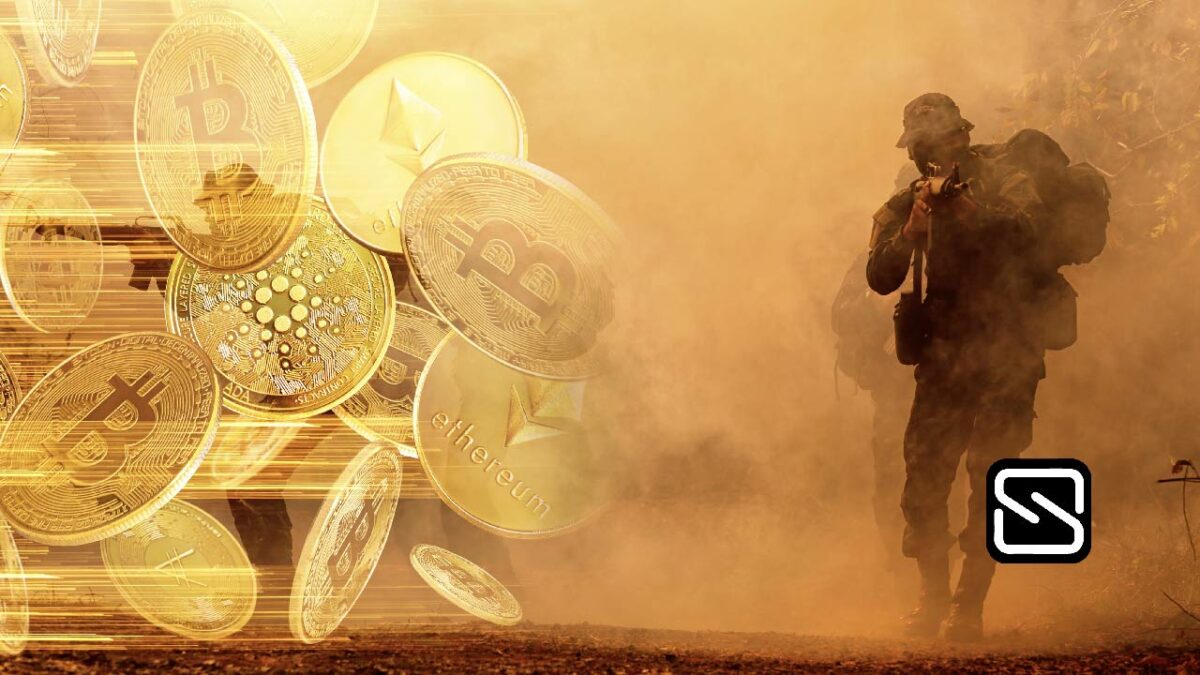While the cryptocurrency market has been volatile in recent months, it is presently in high demand on the battlefield. Since Russia’s invasion of Ukraine, digital currencies have been in the news, with the ever-volatile bitcoin on high demand.
Here are some charts depicting the performance of cryptocurrencies during the greatest attack on a European country since World War 2.
CORRELATION CONUNDRUM
Is there a link or not? That’s been the question for Bitcoin for a long time, with the original cryptocurrency dancing to the rhythm of the stock market at times and not at others.
Bitcoin fell as much as 8% on Thursday after Russia launched its attack on Ukraine, as investors fled riskier assets, before clawing back the losses for the day. The S&P 500 gained 1.5 percent while European markets plummeted 3.3 percent.
Bitcoin’s and stocks’ fates have subsequently intermingled again, albeit to varying degrees.
“It’s still largely been correlated with US equities throughout this crisis,” Joseph Edwards, head of financial strategy at crypto firm Solrise Group, said of Bitcoin.
A SAFE HAVEN?
Crypto fans think Bitcoin as “digital gold,” a good way to deposit funds during conflict or calamity. According to the argument, Bitcoin is more secure than traditional currencies because it has a finite quantity and works on a worldwide computer network beyond the control of governments.
Things are seldom that straightforward. Bitcoin’s safe-haven credentials are unclear: it frequently behaves like risky assets like stocks.
Bitcoin’s qualities, according to investors, fuelled demand and helped it outperform other traditional havens during the war. The US 10-year Treasury yield has dropped 8.7% since last Wednesday, while gold is up 2.6 percent.
Analysts believe the steps will do little to resolve debates over Bitcoin’s safe-haven qualities.
“We don’t think Bitcoin is being viewed as a safe haven, nor should be, but instead its appeal is it’s a supply capped, credit free, digital bearer asset that is proving to be a viable alternative to traditional finance in this current environment,” said Richard Usher at crypto firm BCB Group.
“If the situation continues to escalate and risk markets badly suffer it will struggle to rally further, but in our view still outperform.”
ROUBLE ROOTED
As the rouble has been pummeled by Western sanctions aimed at squeezing Russia’s economy and cutting it off from the global financial system, cryptocurrency trading has exploded in Russia.
On Thursday, the Russian ruble fell to an all-time low of 118.35 per dollar.
According to researcher CryptoCompare, trading volumes between the rouble and major cryptocurrencies reached 15.3 billion roubles ($140.7 million) on Monday, up thrice from a week earlier.
The statistics indicated that rouble-denominated trades using Tether, a so-called stablecoin designed to maintain a constant value, reached 3.3 billion roubles on Monday, the biggest this year and nearly five times more than a week earlier.
According to the data, Russians are rushing to convert their wealth to cryptocurrency.
The conflict has contributed to the idea that Bitcoin “is not simply a speculative asset, but is also a seizure-resistant, policy-independent, longer-term store of value,” said Noelle Acheson, head of Market Insights at New York-based Genesis.
